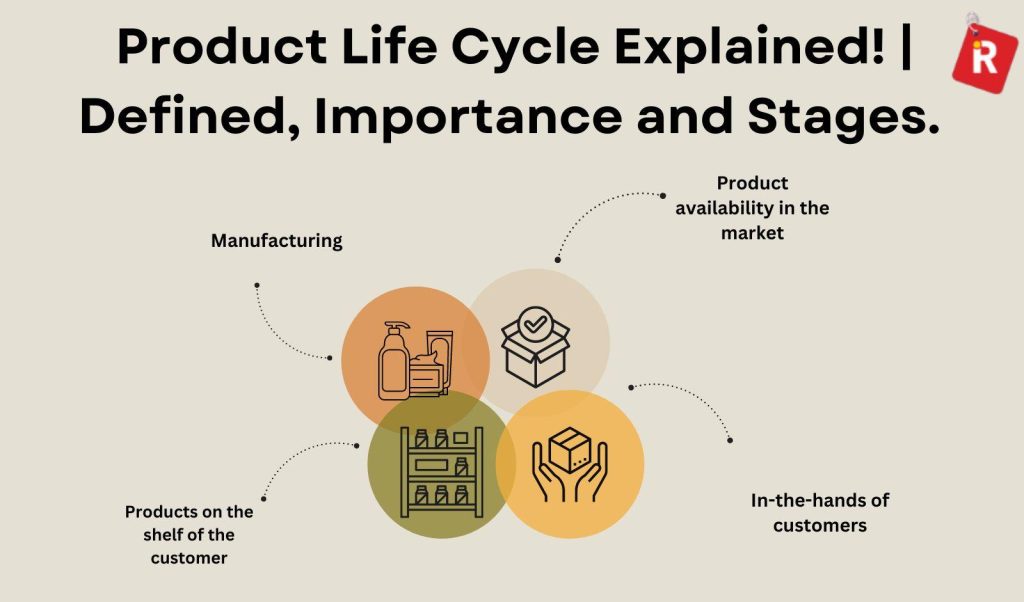Importance of ESD-Safe Packaging in Component Shipping

In the intricate dance of modern electronics, where microchips and delicate components orchestrate the future, safeguarding each step becomes paramount. Picture this: a journey from a bustling factory floor to the hands of an innovator eagerly awaiting their shipment’s arrival. However, hidden within this journey is an insidious threat-static electricity. Often unseen, it looms like an invisible saboteur, capable of derailing innovation with a single zap.
Enter ESD-safe packaging, the unsung hero in the world of component shipping. It’s not just about moving parts from point A to point B; it’s about ensuring their integrity and functionality remain unimpaired. Electrostatic discharge (ESD) can cause latent defects, or worse, complete failure of sensitive electronic components, leading to substantial financial losses and operational setbacks.
In this exploration, we delve into the critical role ESD-safe packaging plays in shielding components from this invisible adversary. Discover how specialized materials, designed to neutralize static, create a protective haven during transit. From anti-static bags to conductive containers, each solution is a testament to innovation in the face of potential catastrophe.
Join us as we uncover why ESD-safe packaging is more than just a precaution-it’s a necessity for every entity committed to excellence in electronics. Let’s journey through knowledge, ensuring every microchip and memory module arrives untarnished, ready to revolutionize the world.
Table of Contents
- Understanding ESD Hazards in Electronics Shipping
- Innovative Packaging Solutions for ESD Protection
- Evaluating Material Choices for Maximum Safety
- Implementing Best Practices in ESD-Safe Packaging
- Q&A
- The Conclusion

Understanding ESD Hazards in Electronics Shipping
In the world of electronics, one of the most insidious threats during transportation is electrostatic discharge (ESD). Even the smallest spark can wreak havoc on delicate components. XYZ Packaging, a leader in delivering innovative packaging solutions, emphasizes the importance of ESD protection. Ensuring ESD-safe packaging is more than a best practice; it’s a necessity to maintain the integrity of electronic products. When components are exposed to static electricity, the resulting failure can lead to costly repairs and loss of trust from clients.
To mitigate these risks, companies like XYZ Packaging have developed solutions that involve specialized materials designed to dissipate static charges. Key features include conductive coatings and grounding mechanisms. Consider using:
- Antistatic bags for storing components, ready to shield from unwanted discharge.
- Foam inserts that dissipate charges while providing cushioning.
- Moisture barrier bags combined with desiccants to prevent moisture accumulation alongside ESD.
Integrating these elements ensures your shipment arrives safely, maintaining the credibility of your brand.
To illustrate the effectiveness of these solutions, consider the following comparison between traditional packaging and ESD-safe options:
| Feature | Standard Packaging | ESD-Safe Packaging |
|---|---|---|
| Static Protection | Poor | Excellent |
| Cost | Lower | Moderate |
| Product Reliability | Variable | Consistent |
Investing in ESD-safe packaging from companies like XYZ Packaging not only enhances your product’s reliability but can also foster lasting relationships with your clients by ensuring quality upon arrival.
Innovative Packaging Solutions for ESD Protection
Evaluating Material Choices for Maximum Safety
When considering the safety of sensitive electronic components during transit, selecting the appropriate materials for ESD-safe packaging becomes crucial. Packaging must offer protection against electrostatic discharge, which can irreparably damage electronic parts. Companies like BrandName have pioneered innovative solutions ensuring safe delivery. Key materials include anti-static bags, conductive foam, and static shielding bags. Each serves a distinct purpose, ensuring that sensitive components arrive undamaged.
Material properties need thorough evaluation. Anti-static bags prevent tribocharging, while static shielding bags create a Faraday cage effect around the components. These packaging materials are often made from layers of polyester and aluminum, offering both protection and visibility. Conductive foams are another vital addition, providing cushioning while dissipating static charge. This diverse selection from BrandName ensures comprehensive safeguarding of shipped items.
To guide decision-making, consider the following attributes of popular ESD packaging materials:
| Material | Benefits | Suitable For |
|---|---|---|
| Anti-Static Bags | Minimizes triboelectric charging | Semi-sensitive components |
| Static Shielding Bags | Provides a Faraday cage effect | Highly sensitive components |
| Conductive Foam | Cushions and dissipates static | Small and delicate components |
By leveraging insights from leaders like BrandName, one can choose the optimal ESD-safe packaging, ensuring the integrity and safety of each shipment. Carefully selected materials make a significant difference, reducing the risk of costly damages and ensuring compliance with industry standards.
Implementing Best Practices in ESD-Safe Packaging
Employing effective strategies in the protection of sensitive components is crucial for maintaining their integrity during transit. At ComponentGuard, prioritizing the correct methods for ESD-safe packaging is a commitment we uphold diligently. By integrating industry-approved techniques, we are ensuring that our shipments meet the highest standards. These practices not only safeguard components but also enhance customer satisfaction and trust.
There are several essential strategies we adopt to keep components safe from electrostatic damage. Firstly, using materials with antistatic properties is essential. These materials prevent static charges from building up and potentially discharging on sensitive components. Additionally, ComponentGuard employs moisture barrier bags to offer dual protection against static and environmental factors. Ensuring the right humidity levels by using desiccant pouches further preserves the components’ functionality.
Key Practices Include:
- Implementing appropriate workstation grounding methods.
- Regular training of staff on ESD prevention techniques.
- Conducting routine quality assessments to verify packaging standards.
When examining the effectiveness of these practices, several metrics are critical to ensure compliance and performance:
| Practice | Evaluation Metric |
|---|---|
| Material Testing | Surface Resistance Level |
| Environmental Control | Relative Humidity Measurement |
| Staff Training | Training Session Frequency |
By incorporating these practices, ComponentGuard not only mitigates the risk of component damage but also sets benchmarks in packaging standards. This holistic approach is a testament to our commitment to quality and innovation in the field of component shipping, reinforcing our position as leaders in ESD-safe packaging.
Q&A
Q&A: Understanding the
Q1: What is ESD, and why is it a concern in component shipping?
A1: ESD stands for Electrostatic Discharge, a sudden flow of electricity between two objects. It’s a concern in component shipping because sensitive electronic components can be damaged by even a minor static discharge, affecting their functionality and reliability.
Q2: How does ESD-safe packaging help in preventing these issues?
A2: ESD-safe packaging is designed to shield electronic components from static electricity. By using materials that dissipate or conduct static, the packaging ensures that any potential discharge is neutralized before reaching the sensitive components.
Q3: What materials are typically used in ESD-safe packaging?
A3: Common materials include conductive foam, anti-static bags, and dissipative containers. These materials help to either prevent static buildup or safely disperse any generated charge.
Q4: Are there different types of ESD-safe packaging for different needs?
A4: Yes, there are various options-such as shielding bags for high levels of protection and pink anti-static bags for less sensitive situations. The choice depends on the level of ESD risk associated with the components being shipped.
Q5: Can using standard packaging methods be sufficient for shipping components?
A5: Standard packaging lacks the protective properties needed to prevent ESD damage. While it may save costs initially, the risk of component failure or malfunction increases, leading to potential losses and customer dissatisfaction.
Q6: What are some best practices in using ESD-safe packaging?
A6: Best practices include using ESD-safe workstations, grounding tools and personnel, and ensuring that all packaging stages-from storage to transportation-maintain ESD-safe protocols to protect the components effectively.
Q7: How does ESD-safe packaging contribute to overall business success?
A7: By reducing the risk of damaged or defective products, ESD-safe packaging enhances product quality and reliability. This leads to increased customer trust, fewer returns, and a stronger reputation in the market.
Q8: Is the investment in ESD-safe packaging significant compared to its benefits?
A8: While there is an initial investment, the long-term benefits-such as reduced failure rates and improved customer satisfaction-far outweigh the costs, making it a smart investment for companies in the electronics sector.
The Conclusion
In the intricate dance of component shipping, ESD-safe packaging emerges as the unsung hero, safeguarding the delicate symphony of circuits and chips that fuel our modern world. As we’ve journeyed through the nuances of this topic, it’s clear that protecting electronic components from the subtle yet destructive force of electrostatic discharge is not merely a precaution but a necessity.
The investment in ESD-safe solutions transcends mere cost-effectiveness; it becomes a commitment to quality, reliability, and innovation. As technology continues to advance, forging paths into uncharted territories, the role of ESD-safe packaging stands unwavering, bridging the gap between innovation and execution, ensuring each component’s journey is as safe as its destination is meaningful.
Embracing these protective measures is not just about preserving parts; it’s about championing the future of technology. Let us continue to pack with care, ship with confidence, and innovate without limits, knowing that our efforts today safeguard the innovations of tomorrow.

